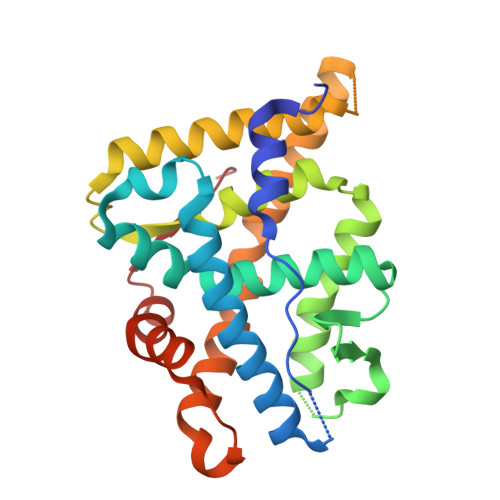Improving the developability profile of pyrrolidine progesterone receptor partial agonists.
Kallander, L.S., Washburn, D.G., Hoang, T.H., Frazee, J.S., Stoy, P., Johnson, L., Lu, Q., Hammond, M., Barton, L.S., Patterson, J.R., Azzarano, L.M., Nagilla, R., Madauss, K.P., Williams, S.P., Stewart, E.L., Duraiswami, C., Grygielko, E.T., Xu, X., Laping, N.J., Bray, J.D., Thompson, S.K.(2010) Bioorg Med Chem Lett 20: 371-374
- PubMed: 19926282
- DOI: https://doi.org/10.1016/j.bmcl.2009.10.092
- Primary Citation of Related Structures:
3KBA - PubMed Abstract:
The previously reported pyrrolidine class of progesterone receptor partial agonists demonstrated excellent potency but suffered from serious liabilities including hERG blockade and high volume of distribution in the rat. The basic pyrrolidine amine was intentionally converted to a sulfonamide, carbamate, or amide to address these liabilities. The evaluation of the degree of partial agonism for these non-basic pyrrolidine derivatives and demonstration of their efficacy in an in vivo model of endometriosis is disclosed herein.
Organizational Affiliation:
Department of Chemistry, Metabolic Pathways Centre for Excellence in Drug Discovery, GlaxoSmithKline Pharmaceuticals, 709 Swedeland Road, King of Prussia, PA 19406, USA. lara.s.kallander@gsk.com
















